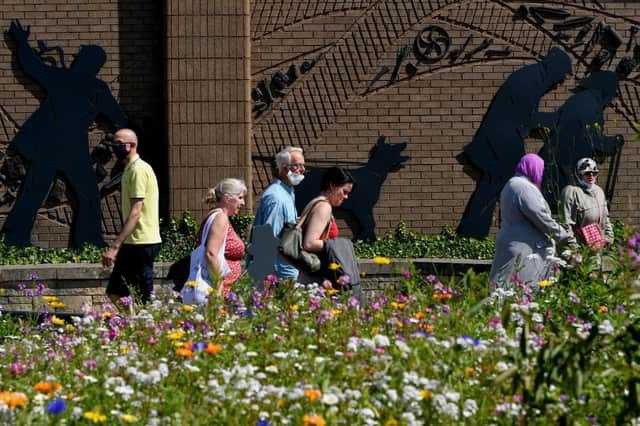Here’s why Greater Manchester and parts of East Lancashire and West Yorkshire have new lockdown restrictions


Health Secretary Matt Hancock announced late on Thursday evening (30 July) that new lockdown restrictions will come into place for Greater Manchester, parts of East Lancashire and parts of West Yorkshire.
Mr Hancock made the announcement on Twitter at 9.16pm on Thursday, explaining that people from separate households are banned from meeting each other at home.
Advertisement
Hide AdAdvertisement
Hide AdThe new restrictions came into place just a few hours later, at midnight.
Which areas are included?
Greater Manchester is included in the new restrictions, alongside Blackburn with Darwen, Burnley, Hyndburn, Pendle, Rossendale in East Lancashire, and Bradford, Calderdale and Kirklees in West Yorkshire.
The city of Leicester, which saw the UK's first local lockdown on 29 June, is also included in the new restrictions.
What are the new rules?
Households in these areas are now banned from meeting each other indoors as of midnight on Thursday, in a bid to reduce coronavirus case numbers.
Advertisement
Hide AdAdvertisement
Hide AdPeople in the affected areas will not be allowed to mix with other households (apart from those in their support bubbles) in private homes or gardens.
However, some exemptions will be put in place, including for the vulnerable.
The government will sign new regulations to make these changes legally enforceable.
This means local authorities and police forces will have the power to enforce these restrictions. More details will be available once the regulations are published.
Advertisement
Hide AdAdvertisement
Hide AdCan I still go to pubs and restaurants?
When the announcement was made, there was confusion regarding what people could and couldn’t do, including visiting a pub or restaurant.
People can still go to pubs and restaurants, but only with members of the same household - two households or more should not go together.
However, Boris Johnson announced on Friday (31 July) that some further easing of lockdown restrictions in England, that were due to be relaxed on Saturday 1 August for higher risk settings, have been postponed for two weeks at the least.
This includes small wedding receptions, indoor performances, the pilot of crowds in sports centres and the reopening of bowling alleys, skating rinks and casinos.
Advertisement
Hide AdAdvertisement
Hide AdAlongside this, the Prime Minister announced that face coverings are to be mandatory from 8 August in other indoor settings where people are likely to come into contact with other people they do not know.
This includes museums, galleries, cinemas and places of worship.
Shielding will still be paused nationally from 1 August, as planned.
How long will the new restrictions last?
There is currently no endpoint to the new restrictions, but it is understood that they will be subject to a weekly review.
Advertisement
Hide AdAdvertisement
Hide AdIn Leicester, which has been under a local lockdown since 29 June, restaurants, cafes, bars and hairdressers can open from Monday 3 August, but leisure centres, gyms and pools will remain closed.
Cinemas and museums will also be able to open in Leicester from Monday and religious ceremonies will be able to take place.
The restrictions on household visits will continue to apply in Leicester.
Why are these new restrictions coming into place?
The new restrictions are coming into place due to current data reflecting the spread of coronavirus infections in these areas.
Advertisement
Hide Ad